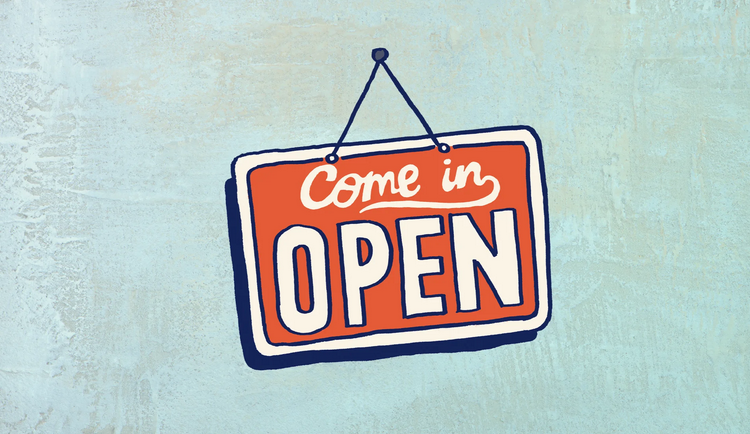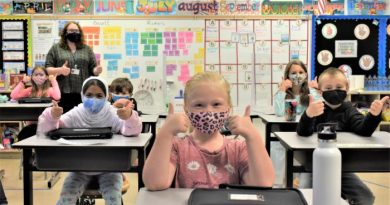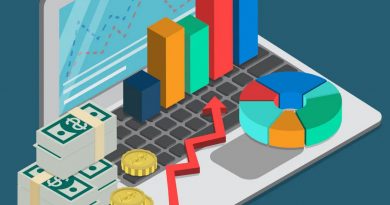Setting Up a School Store as Project-Based Learning
A high school course on running a retail store can provide special education students with valuable academic and professional skills.
One of the main goals of any special education program is to provide opportunities for special education students, particularly those with severe disabilities, to interact with their nondisabled peers. At the secondary level, an additional goal is to provide coursework and experiences that give students job skills that can translate into potential careers post-high school.
One way a school can achieve both of these goals simultaneously is to have a fully functioning retail store within the school, run by special education students. In order to make this happen, the planning included project-based learning curriculum development. In addition, we purchased merchandise and display cases for the store. In 2019, the store became fully run by our special education department.
Store Logistics
The store is centrally located on our campus and contains school spirit gear like sweatshirts and hats, as well as items that draw customers in daily, like coffee and tea, snack items, cold drinks, and freshly baked items. The store is open on certain nights like back-to-school night, freshmen orientation, and some nights during the holiday season. Our customers are students, staff, and parents.
Our school initially funded the store, which is now self-funded through sales and inventory management. Items are priced to sell at or slightly above cost and are intended to continue to fund the store and not necessarily turn a profit. Items are marked higher than cost to ensure that we can repurchase items even if costs increase.
While a staff member is always in charge of the oversight of money and order, students often take a leadership role, with upper-class students taking on managerial duties to assist the staff store manager. Right now, our special education teacher oversees the store, and in the past, business teachers have overseen the store as well.
Having the right staff in the store is a critical component—most of the ideas that are generated come from our staff who oversee the store. Likewise, the teacher(s) helps guide the students in what to order, which also generates customers. Our students and staff work together to create the best experience possible while learning and growing along the way.
The Course
The students who run the store enroll in an elective course called Retail Careers. This course is only open to our special education students. The course is a full-year course, offered multiple periods a day. It is a great example of project-based learning that carries over year after year.
The curriculum: The curriculum development plan started the year before opening the store and was based on the skills that a student would need to be successful in a retail environment:
- Dealing with customers of all types, with role-play scenarios to develop conflict-resolution strategies
- Learning to listen to an employer and implement constructive feedback
- Managing inventory supply
- Maintaining cleanliness
- Exchanging and handling money
- Knowing when and how to ask for help in the workplace
- Identifying one’s own strengths and weaknesses
Students spend part of their class learning the curriculum. They can immediately practice these skills learned in the store setting while getting the opportunity to interact with their peers and staff who frequent the store.
Job readiness: Additionally, the skills that the students learn in class are not only transferable to retail jobs but also help students learn social skills that assist them in and out of school. The skills that the students learn and develop help prepare many of them for their next phase, which can be independently getting a job outside of school or, for those with more challenges, getting a job outside of school with a job coach.
The store is a great introductory way for students to learn and practice skills without the pressure that goes along with a job. It helps students transition from the theory learned in school to real-life workplace situations where they are monitored and guided by educators.
Store Innovations
In the class, students brainstorm ways to get new customers. The more our general student body and staff patronize the store, the more our students in the class get to practice the skills they learn.
As a result, the store has modified its services and evolved over time. One popular new idea is the coffee cart. Students take advance orders, and on Fridays, they deliver coffee and treats to staff in their classrooms who have placed the orders. This allows students to have multiple interactions with staff, make a strategy for when and how to deliver items, and then deliver on Friday mornings. We have found that staff who do not normally get the chance to visit the store use this avenue to interact with our students.
Ideas like the coffee cart are collaborative efforts by our students, who are often the ones generating ideas as part of their preparation for the class; our staff who work and oversee the store; or customers who offer ideas—simulating real-life ways in which stores evolve over time.
If I were starting a store today, I would focus on the main ingredients that have made our endeavor successful: identifying students who would benefit from the experience; identifying a teacher with a passion for giving students skills that will help them throughout their lives, and creating a plan for the students to be a part of the school’s culture and the store to be a hub where students and staff gather throughout the day. Had I known how important the store would be for our school’s culture, I would have created this space for our school from the beginning.
Source: https://www.edutopia.org/article/setting-up-a-school-store-as-project-based-learning




